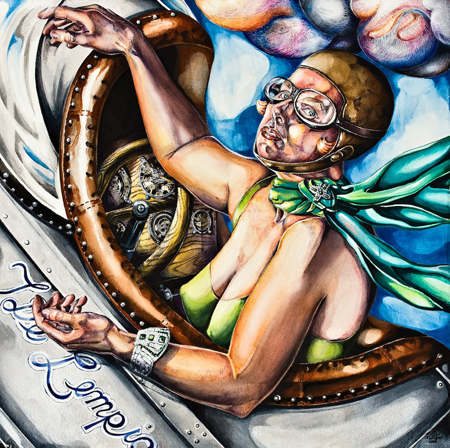Susan Roth’s
works are currently on exhibition at the Luther W. Brady Art Gallery in an
exhibition called Form, Frame, Fold.
Susan Roth grows inspired by the naturalism
that surrounds her. Whether it is the motion of the waves or the whirl of the
wind, she is fascinated by the evidence of nature’s presence and the trail it
leaves behind. In this way, movement becomes
key in her oeuvre and can be perceived in different ways. Being moved
from a particular story or event leads Susan Roth to create pieces in which
there is much movement. Moving
memories are reincarnated through her pieces which embody travel, journey, and
transportation via the mediums, textures, colors, or perceptions. The optimism she develops from these elements
she was also able to find in the touching story of Alice Herz-Sommer.
 A piece
called Alice’s Piano within the
exhibition, and prominently displayed in the show, is the result of an
emotional catalyst. To give a background
to the story of Alice Herz-Sommer, Susan Roth tells us,
A piece
called Alice’s Piano within the
exhibition, and prominently displayed in the show, is the result of an
emotional catalyst. To give a background
to the story of Alice Herz-Sommer, Susan Roth tells us,
“The life of Alice Herz-Sommer talks to
the matter of what art is to the working artist. It is the story of joy:
both making art and being alive. Turning to Chopin's Etudes, the 27
solo pieces, Herz-Sommer found belief through practice, faith through optimism
for the purpose of life. This attitude to do, to honor, to emulate
allowed her great freedom from the anxieties of influence. All
this is to say, I trust my methods, [as] painting is artisanal, and allows any
inspiration to come from this freedom to search.”
Alice Herz-Sommer was born on November 26,
1903 in Prague, to a German speaking, Jewish family where she was one of five
children.
To avoid the repercussions of what came with
the war, her family fled Prague for Palestine.
It was Alice’s decision to stay behind to take care of her ailing
mother. In 1942, her mother was sent to
Terezin, a Nazi operated camp. After
deeming that experience as “the lowest point of my life” Mrs. Herz-Sommer decided
to begin work on Chopin’s Etudes.
In 1943, Mrs. Herz-Sommer, her husband, and
her son were also transported to Terezin, where many of the inmates were among
Czechoslovakia’s most renowned musicians and artists. It was then that Mrs. Herz-Sommer joined the
propagandist band, catering to prisoners and Nazi guards, as well as the Red
Cross which visited three times a year. The music seemed to boost the little morale of
the camp and gave people joy.
The beauty of this story comes from the
music: It was the concerts and music that kept her morale afloat while in
Terezin, and it was Chopin’s Etudes that carried her through the rest of her
long life. Though Mrs. Herz-Sommer’s
hands were beginning to fail her (she lost use of two of her fingers) she
adapted, and it was her musical inclinations that gave her life and enriched
her spirits. Joy and the activities that
evoke optimism in the lives of people can also help guide one to realize their
purpose of life. Susan Roth says: “Alice's Piano is dedicated to this
spirit. The title acknowledges the feelings I have for the picture.
I do hope that the viewer can see my sense of what James Joyce says, always,
"the same anew".


















.jpg)



